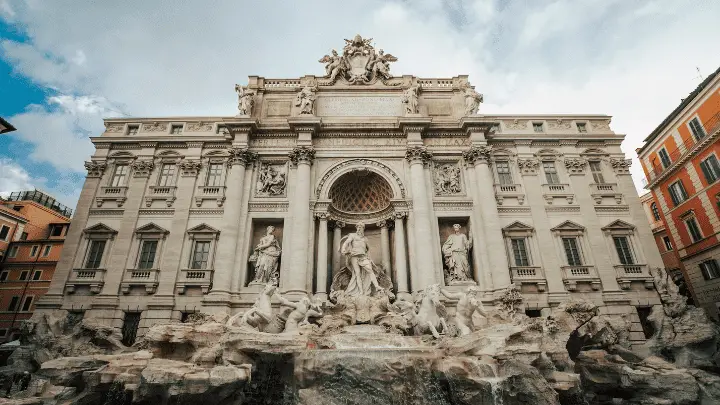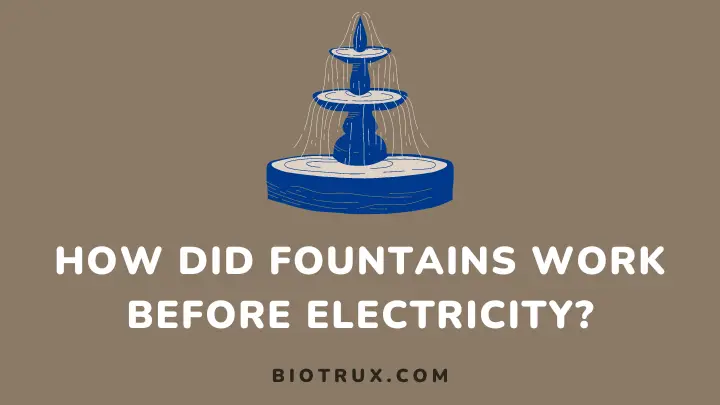Let’s take a step back in time and ponder how things used to work before modern technology. Have you ever thought about how fountains used to work before electricity? Imagine a time when fountains were the height of sophistication and the centerpiece of every garden.
How did these magnificent structures create such awe-inspiring water displays without electrical pumps? In the article, you’ll explore the fascinating development of fountains that changed over time.
You’ll also explore the amazing creativity that made it possible to move large quantities of water with nothing but gravity, hydraulics, and water wheels. In addition, you’ll find some fascinating examples of ancient fountains that still stand today.
So, without further ado, let’s dive into the world of fountains and find out how they worked before electricity.
Overview of the Development of Fountains Throughout History
Fountains have a rich history dating back to ancient times. They were primarily used for practical purposes such as water for drinking, irrigation, and washing.
In many ancient societies where electricity was non-existent, fountains served as the main water source and were considered essential for survival.
Over time, fountains evolved, becoming more ornate and decorative in design. During the Renaissance, fountains became a symbol of wealth and power and were often used to showcase the luxury of wealthy patrons.
Many notable examples of these elaborate fountains can be seen in Italian gardens, such as the famous Fountain of Trevi in Rome. In modern times, fountains continue to hold an important place in our society.
While indoor plumbing may have replaced their practical purpose, fountains remain popular for their aesthetic value.
They also add tranquility to outdoor spaces. Whether it’s a simple birdbath or a complex water feature, the sound of trickling water has a soothing effect that many people find relaxing.
How Did Fountains Work Before Electricity?
Before the widespread use of electricity, fountains work on simple mechanical principles to draw water, create pressure, and direct the flow. These mechanisms included gravity, hydraulic pumps, and water wheels, each playing a crucial role in the fountain’s operation.
Here’s a breakdown of how each of these mechanisms worked:
Gravity
Gravity is a fundamental force that pulls objects toward the Earth’s center. The same force keeps us grounded and planets in their orbits. Fountains use gravity to create water pressure, which propels the water upwards, creating the desired effect.
The higher the fountain, the more gravitational force is needed to push the water to the top. This force can be increased by increasing the height of the water source, such as a natural spring or a man-made reservoir.
The water would then flow through channels, canals, or pipes, using the force of gravity to create a continuous flow.
Hydraulic pumps
Hydraulic pumps use pressure to move liquids through pipes or channels. They create a pressure difference between two points, pushing the water from the lower to the higher point.
These pumps were commonly used in fountains to create the desired water pressure by manual or animal-powered means. One of the most common hydraulic pumps used in fountains was the Archimedes’ screw, named after the Greek mathematician who invented it.
This screw consisted of a rotating cylindrical shaft with a helical blade. It scooped up water at the bottom and moved it to the top through several channels. As the screw rotated, the water was lifted higher and higher, creating the desired pressure.
Water wheels
Water wheels are mechanical devices that use flowing water to generate power. They work by harnessing the kinetic energy of water flow and converting it into rotational motion, which can power machines or devices.
Fountains often use water wheels to move the water from the lower to the higher point, creating the necessary pressure.
One of the most famous examples of water wheels in fountains is the Moorish Wheel in the Alhambra Palace in Granada, Spain. This wheel consisted of a series of wooden paddles, which were turned by the force of the water flowing down a channel.
As the paddles rotated, they lifted the water to the top of the fountain, creating a mesmerizing display.
Examples of Ancient Fountains That Work Before Electricity

It’s incredible to think about the amazing fountains that ancient civilizations could create without electricity. For example, the Fountain of Peirene in Ancient Corinth, Greece, was built in the 2nd c. B.C. and uses a natural spring as its water source.
The Fountain of Trajan in Rome, Italy, was built in the 2nd century AD. This fountain was powered by an aqueduct that brought water to the site. It featured a large central basin and multiple water spouts.
In addition, the Fountain of Wealth in Ephesus, Turkey, built in the 1st century AD, used gravity to move water from a nearby river to a large central basin. The fountain is decorated with intricate carvings and statues.
Another impressive fountain is the Fountain of Qasr al-Mshatta in Jordan, which was built in the 8th century AD and used a complex hydraulic system to distribute water throughout the palace complex.
And let’s not forget about the Fountain of Gardens in Babylon, considered one of the Seven Wonders of the Ancient World and used a series of water channels and cisterns to bring water from the nearby Euphrates River to the gardens.
It’s fascinating to see how these fountains could operate and create such beautiful displays without the use of modern technology like electricity.
FAQs
How do fountains get their water supply?
Fountains can get their water supply from various sources, such as natural springs, reservoirs, or municipal water systems. Sometimes, the water is recycled and filtered to ensure its cleanliness and safety.
How are fountains maintained and cleaned?
Fountains require regular maintenance and cleaning to keep them functioning properly and looking their best. This can include removing debris from the water, cleaning the pumps and filters, and repairing damaged parts.
How were ancient fountains designed to create intricate water patterns and displays without electricity?
Ancient fountains created intricate water patterns and displays using various techniques. These techniques included multiple water spouts, jets, channels, and different materials and shapes to create different water effects.
Are fountains still popular today?
Fountains remain popular today as decorative elements in private gardens and public spaces and as functional irrigation or water supply structures. They offer a unique and captivating display of water, light, and sound and can enhance the beauty and atmosphere of an environment.
Conclusion
Believe it or not, fountains date back to ancient times and are powered by simple mechanisms. These early fountains used gravity to create water flow and were often designed to replicate natural stream or river flow. They also symbolize wealth, power, and purity.
As technology advanced, fountains became more complex and intricate, often incorporating pumps and mechanical devices to create intricate water displays. Even today, fountains remain a popular attraction and a testament to human creativity and innovation.
In conclusion, while technology has made our lives easier and more efficient, it’s imperative to remember that innovation history goes back thousands of years. So the next time you come across a fountain, appreciate this amazing creation’s intricate workings and history.
Visit biotrux to explore more interesting articles.
Thanks for reading.
